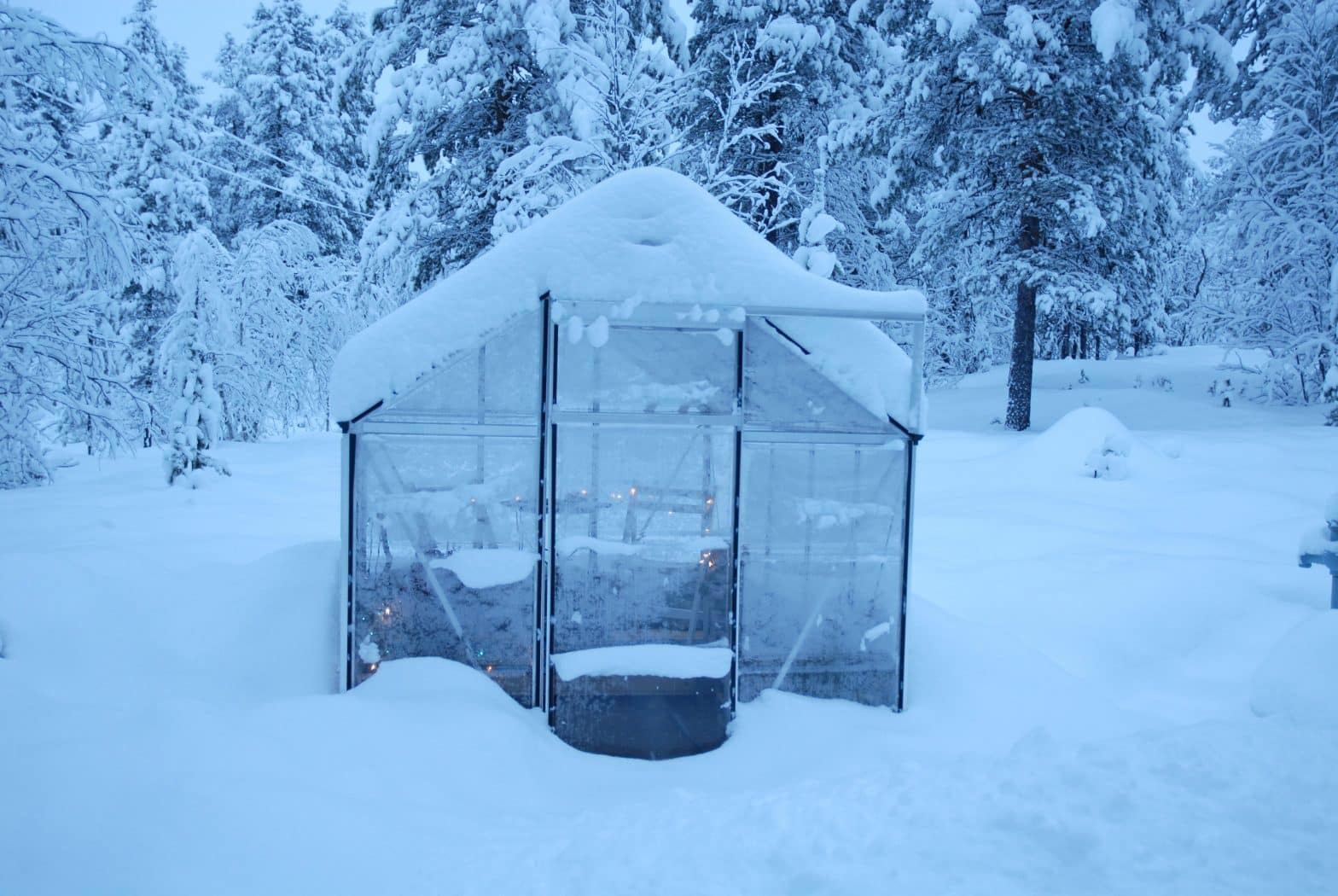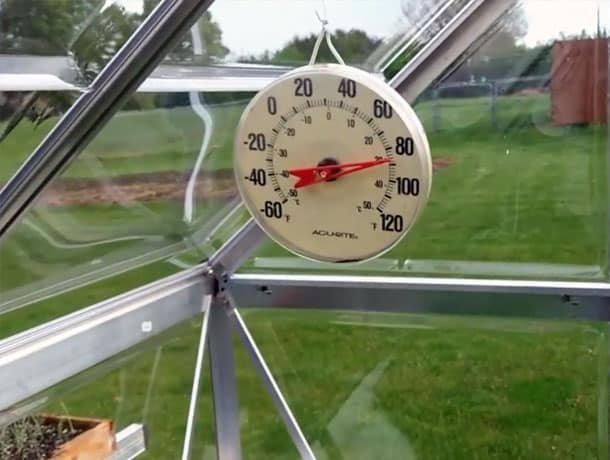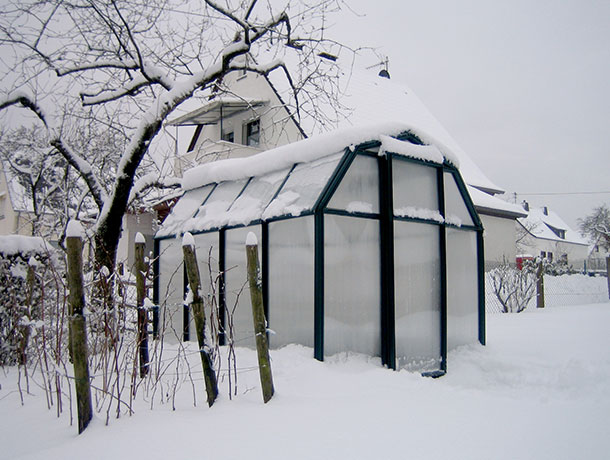
6 STEPS HOW TO BUILD A GREENHOUSE
Thinking about how to build your own greenhouse? There are a few things you want to take into consideration.
greenhouse is used to accumulate heat, but winter temperatures in cold areas can drop as low as -17°C (0°F). Here are a few tips on how to protect overwintering plants in your greenhouse.

Store solar energy in thermal mass – Thermal mass, also known as heat sink, is not actually providing the energy, it’s simply storing it and releasing it later, much like a battery does. The amount of energy you can store depends on the heat capacity of the material and the amount of the mass employed. You can use water, which holds as much as 2 times in comparison with concrete 4 times compared to soil.
Use a Thermometer – Invest in a greenhouse thermometer with maximum and minimum readings, and check it daily. By keeping an eye on the air temperature you will be able to use your greenhouse heater more efficiently and adjust it when necessary.

Insulate with bubble wrap – A layer of bubble wrap can reduce heat loss and block icy winter droughts and even unheated greenhouses will benefit from it. Find specially made horticultural bubble wrap insulation from garden centers and apply it across the interiors of your greenhouse. Use wrap with larger bubbles to let more light in. Greenhouse bubble wrap can also help insulate outdoor pots, protect root balls from freezing weather and prevent pots from cracking.
Greenhouse heating system – If you install a power supply in your greenhouse, electric fan heaters can be ideal. They move the air around the structure, thus helping prevent cold spots and reduce the risk of disease. If a power supply isn’t available, a kerosene heater can become an alternative.
Use a Thermostat – Heat the greenhouse only when necessary to save money and energy. Many electric greenhouse heaters are equipped with a built-in thermostat to allow you to set the heater to work only when temperatures drop below a set point.
Choose the Right Temperature – Don’t waste energy and money on maintaining higher temperatures than your plants require – most plants do not require warm conditions. You can keep your heated greenhouse frost free with a minimum temperature of 2°C (36°F). Most tender plants such as pelargoniums, half-hardy Fuchsias, and citrus trees will be happy with a 7°C (45°F) minimum temperature. This also applies to young plants and plug plants while growing them on. For delicate species such as Sundaville and other conservatory plants, increase the temperature to a minimum of 13°C (55°F).
Only heat the area that you need to – Heating a large greenhouse can be expensive and wasteful if you only have a few delicate plants. Group them together and erect a solid perspex partition or create curtains of bubble wrap insulation to divide the greenhouse into smaller areas that can be heated more economically.

Position Heaters Carefully – Electric fan heaters are best suited in an open, central spot at one end of the greenhouse. Avoid positions where the heater can come into contact with water. You may need to angle the greenhouse heater to direct the airflow above plants that are standing close by, if necessary, which will prevent their foliage from being desiccated by the flow of warm air.
Ventilate to Combat Humidity – Heating your greenhouse can have a drawback – increased humidity. That is why good ventilation is essential to prevent the spread of fungal diseases and maintain a healthy growing environment. Prevent moisture from building up by watering plants sparingly, early in the day. Open the greenhouse vents on warm sunny mornings to clear condensation and close them again before the sun goes down to trap the daytime warmth in the greenhouse and keep it warmer for longer.
Use Incandescent Rope Lights – A cheap way to warm greenhouse soil is by using rope lights. To harvest heat, you must only use the “old school” incandescent type, so look for “non-LED Christmas lights”. They can be simply placed on the ground around your plants, or under plastic planters that are able to transfer heat.
Horticultural fleece – On extra cold nights a layer or two of horticultural fleece will provide several degrees more protection to your plants without the need to turn up the thermostat. Crops in greenhouse border soil can be protected by a handy fleece cloche. Remember to remove fleece during the day to ensure that plants receive adequate light and ventilation.